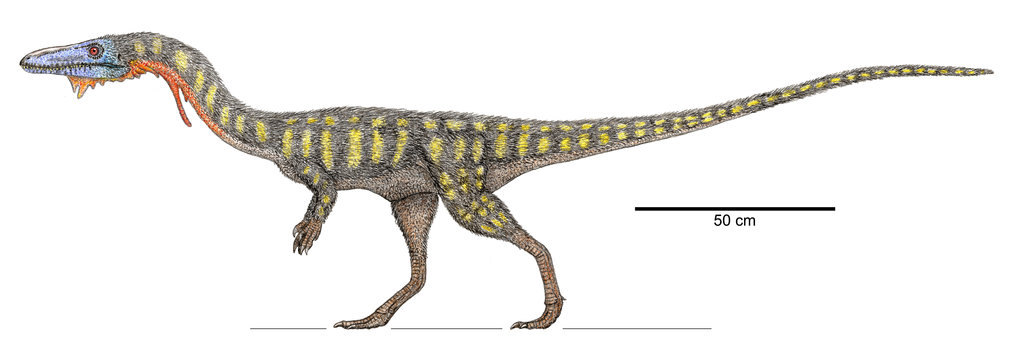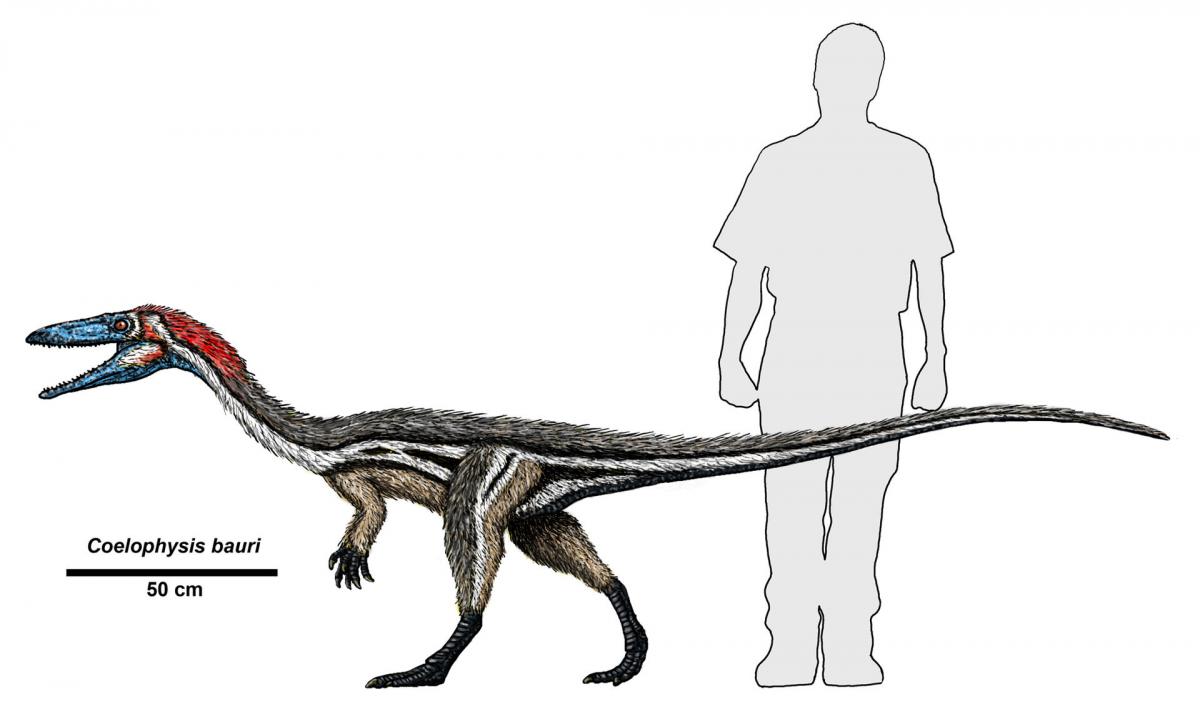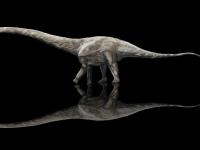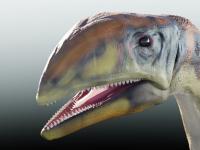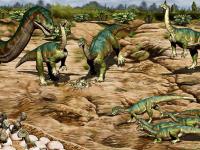Coelophysis
Coelophysis is an genus of coelophysid theropod dinosaur that lived approximately 203 to 196 million years ago during the latter part of the Triassic Period in what is now the southwestern United States. It was a small, slenderly-built, ground-dwelling, bipedal carnivore, that could grow up to 3 m (9.8 ft) long. Coelophysis is one of the earliest known dinosaur genera. Scattered material representing similar animals has been found worldwide in some Late Triassic and Early Jurassic formations. The type species C. bauri, originally given to the genus Coelurus by Edward Drinker Cope in 1887, was described by the latter in 1889. The names Longosaurus and Rioarribasaurus are synonymous with Coelophysis. Another dinosaur genus, Megapnosaurus, has also been considered to be a synonym. This primitive theropod is notable for being one of the most specimen-rich dinosaur genera.
Coelophysis is known from a number of complete fossil skeletons of the species C. bauri, which was a lightly built dinosaur which measured up to 3 metres (9.8 ft) in length and which was more than a meter tall at the hips. Paul (1988) estimated the weight of the gracile form at 15 kg (33 lb), and the weight of the robust form at 20 kg (44 lb). Coelophysis was a bipedal, carnivorous, theropod dinosaur that was a fast and agile runner. Despite being an early dinosaur, the evolution of the theropod body form had already advanced greatly from creatures like Herrerasaurus and Eoraptor. The torso of Coelophysisconforms to the basic theropod body shape, but the pectoral girdle displays some interesting special characteristics: C. baurihad a furcula (wishbone), the earliest known example in a dinosaur. Coelophysis also preserves the ancestral condition of possessing four digits on the hand (manus). It had only three functional digits, the fourth embedded in the flesh of the hand.
Coelophysis is a distinct taxonomic unit (genus), composed of two species; C. bauri and C. rhodesiensis (the latter formerly classified as the genus Megapnosaurus). Two additional originally described species, C. longicollis and C. willistoni, are now considered synonymous with C. bauri. C. rhodesiensis is probably part of this generic complex, and is known from the Jurassic of southern Africa. A third possible species is Coelophysis kayentakatae, previously referred to the genus Megapnosaurus. There is not a clear consensus at this point.

